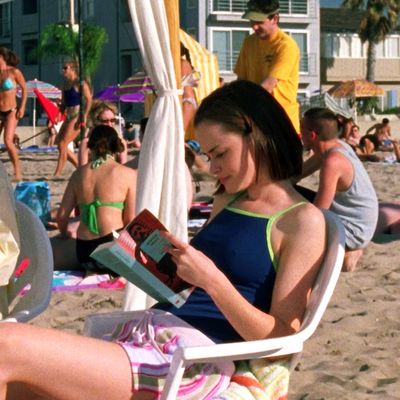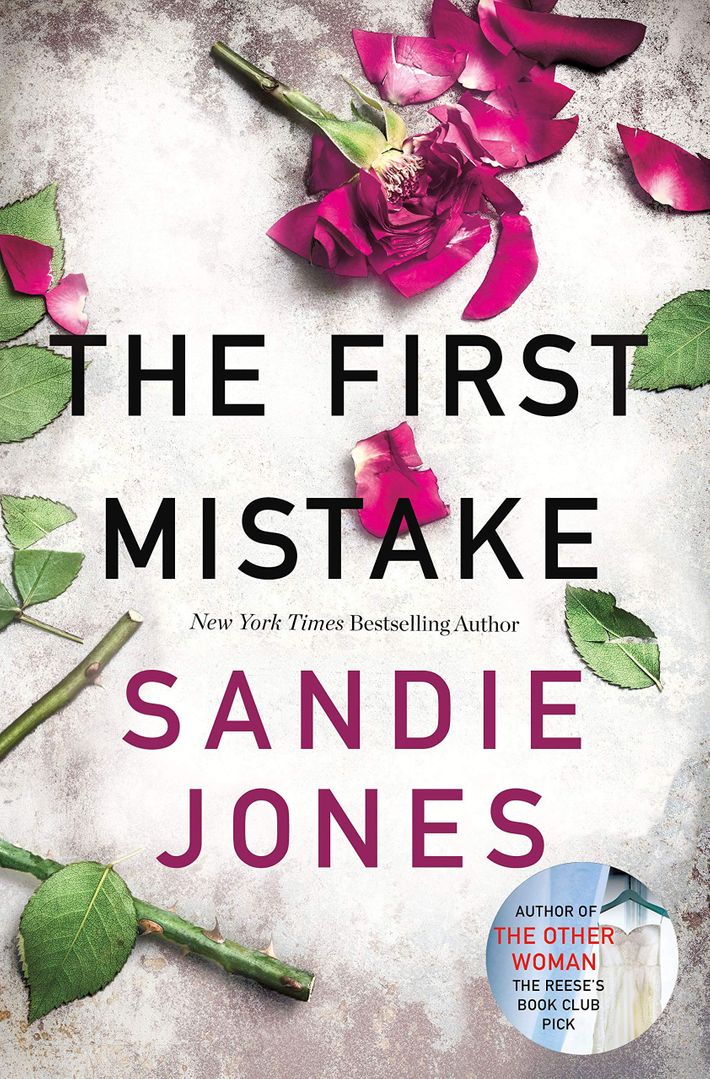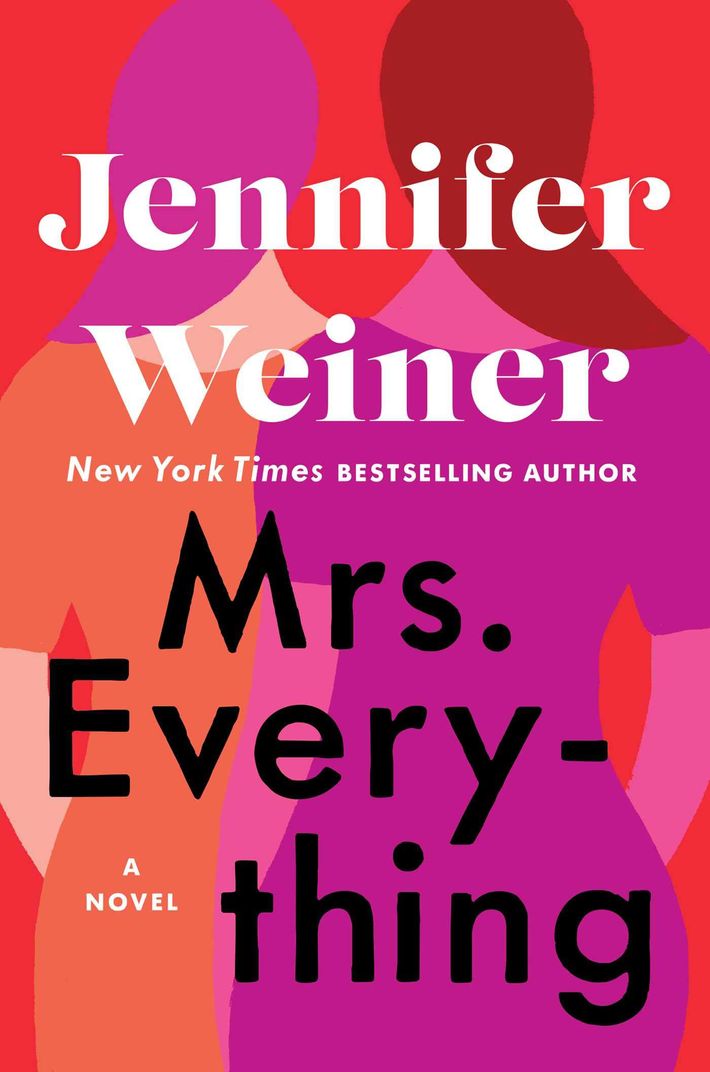
I remember vividly receiving my first piece of real luggage at age 8: a massive duffel bag on wheels that was supposed to evoke Lindsay Lohan’s cool-girl character Hallie Parker in The Parent Trap, who carried a trendy, neon-yellow bag to camp and was admittedly a personal idol at the time.
Alas, instead of packing a deck of playing cards and contraband junk food, I left for summer vacations with a bag full of books — hardcovers. I was that kid. As I was too young to plan ahead for reading anything that wasn’t purely pleasurable, I fell into a habit I maintain today of packing only the fun ones: the beach reads.
The concept of the “beach read” seems ubiquitous and universal, but as a marketing category, it’s actually quite recent. The designation found its way into popular culture and the general lexicon less than 30 years ago, according to a piece by Michelle Dean in The Guardian in 2016. Dean traced its first use to the summer of 1990, “which leads me to believe that somewhere out there is a canny book publicist sitting on the fact that he or she coined the term.” (This year, one canny publicist sent me a few beach reads in a woven tote to really drive the idea home. I loved it.)
The notion of dedicated vacation reading is at least a little older than that. The New York Times published a “Vacation Reading List” in June 1976, with categories ranging from autobiographies and current affairs to poetry and fiction. Something for everyone, then. That kind of variety made sense when everyone was reading — before you could binge-watch an epic fantasy series from your outdoor chaise instead.
Only later did the category become an occasion for the kind of blockbuster marketing push that we’ve come to expect. Judith Clain arrived at Little, Brown and Company almost 20 years ago and is now its editor-in-chief. She says the definition has “gotten a bit looser than it used to be, when big commercial books were published in the summer.” These days, juicy and engrossing reads released in the late spring and summer tend to make waves regardless of genre, but it’s not just any book that gets the “beach read” treatment. The titles FedExed to critics in woven bags are generally thought to have mass appeal; Clain says they’re meant to fly off the shelves in outlets like Target.
“The designation is a way for our sales force to get the book into stores at the right time and in the right places,” says Emily Bestler, who runs an eponymous imprint at Atria. “But stores aren’t going to take a million copies of a book simply because we’ve said it’s a great summer read. We need to convince them it’s one of the summer reads. There’s a ton of competition out there.”
So is the “beach read” just an empty marketing term? It wouldn’t exist as a category if there wasn’t an audience willing to buy it — a mass of readers who know a beach read when they see it. It varies from person to person, of course, but the overarching idea is that the book will complement the frame of mind you hope to be in. You have to want an escape — a vacation for body and brain. “Generally, when publishers talk about ‘beach reads,’ they mean a book that is accessible and hugely entertaining,” says Bestler. “The last thing anyone wants to do when they settle into a beach chair with their margarita is attempt a book about the rise and fall of the Byzantine Empire.”
But is that really so? If historical nonfiction has a place in your beach bag, then it’s a beach read. Still, there are some general parameters. Some of the best beach reads go down like Hallmark holiday movies — and I mean that in the best possible way. You can take a break — for a swim, a cocktail, or a nap — without losing a beat. (Linda Holmes’s Evvie Drake Starts Over, Meg Mitchell Moore’s The Islanders, and Sophie Littlefield and Lauren Gershell’s That’s What Frenemies Are For will do the trick this summer.)
But others, particularly thrillers, pull you in and never let go; they’re made for vacations because they require an open mind and an even more open schedule. (This year: Wendy Walker’s The Night Before and Robyn Harding’s The Arrangement.) Still others simply satisfy your bookstagram impulses with gorgeous covers (Jamie Brenner’s Drawing Home) or humblebrag potential (“The rise and fall of the Byzantine Empire is what really floats my boat!”).
“I’m always suspicious of people who claim to have The Odyssey or Anna Karenina in their beach bag,” says Mary Kay Andrews, one of several “beach read” authors I talked to for this piece. (Andrews’s Sunset Beach is in stores now.) “Anything that smacks of ‘required reading’ is disqualified.” Michele Campbell (A Stranger on the Beach, out July 23) sets out a few basic requirements: “A beach read is a vacation in a book. It’s fully immersive. It’s escapist … It makes you feel all those primal emotions: lust, love, hate, greed, fear, redemption. To achieve this effect, at a minimum, a book should have charismatic characters, a propulsive plot, and a memorable setting.”
A Google search of “beach reads 2019” brings up many variations on the old reliable traffic-driver: the summer book list. (Vulture has the best one, of course.) Genre and commercial fiction dominates, though not completely, and a few upcoming releases appear again and again — Normal People by Sally Rooney; The Mother-in-Law by Sally Hepworth; The Bride Test by Helen Hoang; City of Girls by Elizabeth Gilbert; Mrs. Everything by Jennifer Weiner; and The Friend Zone by Abby Jimenez.
I read quite a few so-called beach reads for this story — a nice perk, with the unfortunate side effect of leaving me with nothing new to read this summer. So I sent a box of my favorite poolside picks — those already mentioned plus The First Mistake by Sandie Jones; Someone We Know by Shari Lapena; Fleishman is in Trouble by Taffy Brodesser-Akner; The Gifted School by Bruce Holsinger; The Chain by Adrian McKinty; and Layover by David Bell — to my extended family.
Passing beach reads along is a noble tradition; they are meant to be shared, not hoarded — left on the beach-house shelf for next week’s renters, or spread contagiously via word of mouth. Occasionally they even inspire other beach reads. Sandie Jones wrote her best-selling debut, The Other Woman, in homage to the beach read of three summers ago, Behind Closed Doors. “Friends, family, even people I’d just casually bump into had either read it, were reading it, or couldn’t wait to get their hands on it,” she says. “There was a real buzz, unlike anything I’d ever seen before. It reminded me that people still love books and if I were going to try writing one, then I should get on and do it.”
But for every writer like Jones, very consciously writing under the “beach read” sun umbrella, there’s another who is wary of a genre considered superficial, often in highly gendered terms. “I never thought beach reads had an image problem until I read a review of one of my books that said it was ‘so much more than a beach read,’” says Jamie Brenner. “It really gave me pause.”
“Popular, plot-based, propulsive male fiction gets read at the beach just as much as women’s fiction,” says Jennifer Weiner, who has been vocal in the past about the implicit sexism of “chick lit.” “But it’s often credited with more respectable names, like thriller, mystery, speculative fiction, horror, while women’s books receive the more derisive, dismissive labels and a lot less critical attention.”
Weiner cites Donna Tartt’s book The Goldfinch as an example. “The book won the Pulitzer, and Vanity Fair still published a lengthy, ‘Yes, but is it art?’ takedown. A Little Life by Hanya Yanagihara was absolutely savaged by some critics as a soap opera masquerading as literature after it was on the best-seller list for months and became very popular among women. The impulse is to say, ‘That’s just a Hallmark movie,’ or whatever code they’re using for ‘trash, comma, female.’”
(Have I exacerbated this problem by writing nearly exclusively here about women’s books — and explicitly referencing Hallmark? Let it be known that I love both women’s fiction and Hallmark movies unabashedly.)
It’s true that there is plenty of Stephen King and John Grisham at the beach, and yet their books rarely appear in vacation roundups. It’s also true that there is still an impulse, even in 2019, to diminish women’s work and to write reviews about the author or audience, rather than the work itself.
The best thing might be simply to drop the idea of a genre hierarchy, while admitting that summer is a welcome opportunity to lower your shades. “It’s so puritanical, this idea that anything fun, indulgent, and pleasurable must be suspect, that the only worthy things are hard or difficult,” says Necessary People author Anna Pitoniak. The readers whom Jane Green (author of The Friends We Keep) likes best are secure enough to be loud and proud about their love of commercial fiction. “They recognize beach reads as a lovely escape that have no reflection on their own intelligence,” she says.
Other authors question the whole idea of reading on the beach. “I think the beach is a terrible place to read,” says Weiner. “Too hot! Too much glare! Too much sand! A beach house is a fine place to read. Swimming pools are also good, if you can stand in the shallow end and the kids don’t splash too much. Bed, in my opinion, is the absolute best place to read.” And beds are for all seasons.






